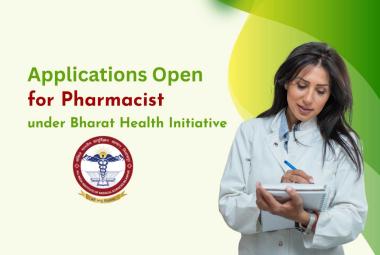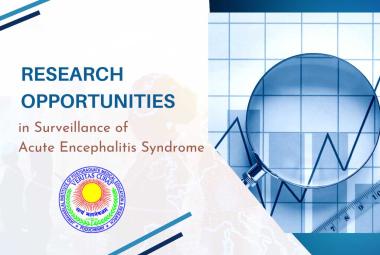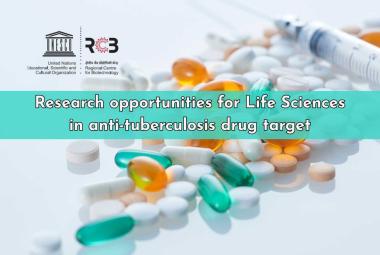About Author:
Rahul Singh
M.PHARMA (Pharmaceutics)
Shri Rawatpura Sarkar Institute Of Pharmacy
Kumhari, Distt-Durg, Chhatishgarh, India
rahulbaba92@yahoo.in
ABSTRACT:-
Tuberculosis (abbreviated TB for tubercle bacillus or Tuberculosis) is a common and often deadly infectious disease caused by mycobacteria. In humans, Mycobacterium tuberculosis is the primary causative bacterium although other mycobacteria such as Mycobacterium bovis, Mycobacterium africanum, Mycobacterium canetti, and Mycobacterium microti are also causes. Tuberculosis usually attacks the lungs (as pulmonary TB) but can also affect the central nervous system, the lymphatic system, the circulatory system, the genitourinary system, the gastrointestinal system, bones, joints, and even the skin.
REFERENCE ID: PHARMATUTOR-ART-1660
I.INTRODUCTION :-
In humans, Mycobacterium tuberculosis is the primary causative bacterium. Tuberculosis is spread through the air, when people who have the disease cough, sneeze, or spit. Most infections in human beings will result in asymptomatic, latent infection, and about one in ten latent infections will eventually progress to active disease, which, if left untreated, kills more than half of its victims.
II.DESCRIPTION OF TUBERCULOSIS :-
Four species of mycobacteria are responsible for Tuberculosis in Humans-
* Mycobacterium tuberculosis
* Mycobacterium bovis
* Mycobacterium africanum,
* Mycobacterium canetti
* Mycobacterium microti
* According to the World Health Organization (WHO), nearly 2 billion people—one third of the world's population—have been exposed to the tuberculosis pathogen.
• Tuberculosis is the world's greatest infectious killer of women of reproductive age and the leading cause of death among people with HIV/AIDS.
• In 2004, around 14.6 million people had active TB disease with 9 million new cases.
• India has the largest number of infections, with over 1.8 million cases.In developed countries, tuberculosis is less common and is mainly an urban disease.
• Annually, 8 million people become ill with tuberculosis, and 2 million people die from the disease worldwide.
III. HISTORY :-
Consumption, phthisis, scrofula, Pott's disease, and the White Plague are all terms used to refer to tuberculosis throughout history. Although it is estimated to have an age of between 15,000 and 20,000 years, it is accepted that the microorganism originated from other, more primitive organisms of the same genus Mycobacterium. It is believed that at some point in its evolution, some species of the bacteria was able to invade animal hosts. This possibly took place with the first species Mycobacterium bovis, which is considered by most to be the oldest of the species that make up the Mycobacterium tuberculosis complex. M. bovis eventually passed to humans at a time coinciding with the domestication of animals. Human bones from the Neolithic show a presence of the bacteria although the exact magnitude (incidence and prevalence) is not know before the nineteenth century. Still, it is estimated that it reached its peak (with regard to the percentage of the population affected) between the end of the eighteenth century and the end of the nineteenth century. Over time, the various cultures of the world gave the illness different names: yaksma (India), phthisis (Greek), consumptione (Latin) and chaky oncay (Incan), each of which make reference to the "drying" or "consuming" affect of the illness, cachexia. Its high mortality rate among middle-aged adults and the surge of Romanticism, which stressed feeling over reason, caused many to refer to the disease as "romantic disease."
IV. TYPES OF TUBERCULOSIS :-
TB is generally divided into two types:-
(1) Pulmonary Tuberculosis
(2) Extrapulmonary Tuberculosis.
(1) Pulmonary Tuberculosis is further divided into 5 different types of TB. These include:-
• Primary TB pneumonia: It is an uncommon form of TB, which mostly occurs in patients with lower immunity, like children and the elderly. It presents itself in the form of pneumonia and is highly contagious.
• Laryngeal TB: It affects the throat, in the vocal chord area. It is also contagious.
• Cavitary TB: This form of Tuberculosis has the classis symptoms associated with TB. It tends to form large cavities in the lungs. It is a highly contagious form of TB.
• Miliary TB: This form often tends to affect the young, the elderly and anyone else who has a weak immune system. Victims are at the risk of contracting a very dangerous fever. It is characterized by the appearance of small granules in the lungs visible through a chest x-ray.
• TB Pleurisy: It can develop shortly after catching the infection. This type of TB is characterized by shortness of breadth, chest pain and fluid in the lungs.
(2) Extra pulmonary TB is further divided into 7 different types of TB. They include the following:-
• Adrenal Tuberculosis: This form affects the adrenal gland, hence the hormone production is also affected. Patients suffering from this form of TB are known to experience fainting or weakness.
• Lymph node disease: It is characterized by the patients experience enlargement of the lymph nodes. The nodes could also rupture through the skin.
• Osteal Tuberculosis: This form of TB affects the bones. The affected area’s bone tissue weakens, and it could cause the patient to fracture the affected area.
• TB Peritonitis: It usually affects the outer lining of the intestine. Due to the TB, fluid gets collected in the outer lining of the intestine, causing the affected to experience pain in the abdomen.
• Renal TB: It is characterized by the patient experiencing pyuria, which is the presence of white blood cells in the urine. It could end up affecting the reproductive organs and cause Epididymitis in men.
• TB Meningitis: The symptoms for this include the patients displaying signs of being affected by a stroke or a brain tumor. It is extremely dangerous and could even prove to be fatal.
• TB Pericarditis: This form of TB is characterized by an increase in the amount of fluid around the heart, and could also hamper its function.
V. SIGN AND SYMPTOMS :-
* When the disease becomes active, 75% of the cases are PULMONARY TB. Symptoms include :-
• chest pain
• coughing up blood
• A productive, prolonged cough for more than three weeks.
Systemic symptoms include
• fever
• chills
• night sweats
• appetite loss
• weight loss
• pallor
• tendency to fatigue very easily
* other 25% of active cases, the infection moves from the lungs, causing other kinds of TB, collectively denoted extrapulmonary tuberculosis.
NOW YOU CAN ALSO PUBLISH YOUR ARTICLE ONLINE.
SUBMIT YOUR ARTICLE/PROJECT AT articles@pharmatutor.org
Subscribe to Pharmatutor Alerts by Email
FIND OUT MORE ARTICLES AT OUR DATABASE
VI.PATHOGENESIS OF TUBERCULOSIS :-
* Mycobacterium tuberculosis is the organism that is the causative agent for tuberculosis (TB). There are other "atypical" mycobacteria such as M. kansasii that may produced a similar clincal and pathologic appearance of disease.
* PATTERNS OF INFECTION :-
There are two major patterns of disease with TB :-
(1) Primary tuberculosis: seen as an initial infection, usually in children. The initial focus of infection is a small subpleural granuloma accompanied by granulomatous hilar lymph node infection. Together, these make up the Ghon complex. In nearly all cases, these granulomas resolve and there is no further spread of the infection.
(2) Secondary tuberculosis: seen mostly in adults as a reactivation of previous infection (or reinfection), particularly when health status declines. The granulomatous inflammation is much more florid and widespread. Typically, the upper lung lobes are most affected, and cavitation can occur.
* When resistance to infection is particularly poor, a "miliary" pattern of spread can occur in which there are a myriad of small millet seed (1-3 mm) sized granulomas, either in lung or in other organs.
Dissemination of tuberculosis outside of lungs can lead to the appearance of a number of uncommon findings with characteristic patterns:-
• SKELETAL TUBERCULOSIS:-
Tuberculous osteomyelitis involves mainly the thoracic and lumbar vertebrae (known as Pott's disease) followed by knee and hip. There is extensive necrosis and bony destruction with compressed fractures (with kyphosis) and extension to soft tissues, including psoas "cold" abscess.
• Genital Tract Tuberculosis: -
Tuberculous salpingitis and endometritis result from dissemination of tuberculosis to the fallopian tube that leads to granulomatous salpingitis, which can drain into the endometrial cavity and cause a granulomatous endometritis with irregular menstrual bleeding and infertility. In the male, tuberculosis involves prostate and epididymis most often with non-tender induration and infertility.
• Urinary Tract Tuberculosis:
A "sterile pyuria" with WBC's present in urine but a negative routine bacterial culture may suggest the diagnosis of renal tuberculosis. Progressive destruction of renal parenchyma occurs if not treated. Drainage to the ureters can lead to inflammation with ureteral stricture.
• CNS Tuberculosis:
A meningeal pattern of spread can occur, and the cerebrospinal fluid typically shows a high protein, low glucose, and lymphocytosis. The base of the brain is often involved, so that various cranial nerve signs may be present. Rarely, a solitary granuloma, or "tuberculoma", may form and manifest with seizures.
• Gastrointestinal Tuberculosis:
This is uncommon today because routine pasteurization of milk has eliminated Mycobacterium bovis infections. However, M. tuberculosis organisms coughed up in sputum may be swallowed into the GI tract. The classic lesions are circumferential ulcerations with stricture of the small intestine. There is a predilection for ileocecal involvement because of the abundant lymphoid tissue and slower rate of passage of lumenal contents.
• Adrenal Tuberculosis:
Spread of tuberculosis to adrenals is usually bilateral, so that both adrenals are markedly enlarged. Destruction of cortex leads to Addison's disease.
• Scrofula:
Tuberculous lymphadenitis of the cervical nodes may produce a mass of firm, matted nodes just under the mandible.
There can be chronic draining fistulous tracts to overlying skin. This complication may appear in children, and Mycobacterium scrofulaceum may be cultured.
• Cardiac Tuberculosis:
The pericardium is the usual site for tuberculous infection of heart. The result is a granulomatous pericarditis that can be hemorrhagic. If extensive and chronic, there can be fibrosis with calcification, leading to a constrictive pericarditis.
VII. DIAGNOSIS :-
* Tuberculosis is diagnosed definitively by identifying the causative organism (Mycobacterium tuberculosis) in a clinical sample (for example, sputum or pus). When this is not possible, a probable diagnosis may be made using imaging (X-rays or scans) and/or a TUBERCULIN SKIN TEST.
* The main problem with tuberculosis diagnosis is the difficulty in culturing this slow-growing organism in the laboratory (it may take 4 to 12 weeks for blood or sputum culture). A complete medical evaluation for TB must include a medical history, a physical examination, a chest X-ray, microbiological smears and cultures. It may also include a tuberculin skin test, a serological test.
(1) MANTOUX TUBERCULIN SKIN TEST :-
Mantoux tuberculin skin tests are often used for routine screening of high risk individuals.
Interferon-γ release assays are blood tests used in the diagnosis of some infectious diseases. There are currently two interferon-γ release assays available for the diagnosis of tuberculosis:
• QuantiFERON-TB Gold (licensed in US, Europe and Japan); and
• T-SPOT.TB, a form of ELISPOT (licensed in Europe).
• Chest photofluorography has been used in the past for mass screening for tuberculosis.
(2) MICROSCOPIC FINDINGS :-
• Microscopically, the inflammation produced with TB infection is granulomatous, with epithelioid macrophages and Langhans giant cells along with lymphocytes, plasma cells, maybe a few PMN's, fibroblasts with collagen, and characteristic caseous necrosis in the center. The inflammatory response is mediated by a type IV hypersensitivity reaction. This can be utilized as a basis for diagnosis by a TB skin test. An acid fast stain (Ziehl-Neelsen or Kinyoun's acid fast stains) will show the organisms as slender red rods. An auramine stain of the organisms as viewed under fluorescence microscopy will be easier to screen and more organisms will be apparent. The most common specimen screened is sputum, but the histologic stains can also be performed on tissues or other body fluids. Culture of sputum or tissues or other body fluids can be done to determine drug sensitivities.
(3) TUBERCULIN SKIN TESTING :-
• Skin testing for tuberculosis is useful in countries where the incidence of tuberculosis is low, and the health care system works well to detect and treat new cases. In countries where BCG vaccination has been widely used, the TB skin test is not useful, because persons vaccinated with BCG will have a positive skin test
• The TB skin test is based upon the type 4 hypersensitivity reaction. If a previous TB infection has occurred, then there are sensitized lymphocytes that can react to another encounter with antigens from TB organisms. For the TB skin test, a measured amount (the intermediate strength of 5 tuberculin units, used in North America) of tuberculin purified protein derivative (PPD) is injected intracutaneously to form a small wheal, typically on the forearm. In 48 to 72 hours, a positive reaction is marked by an area of red induration that can be measured by gentle palpation (redness from itching and scratching doesn't count). Reactions over 10 mm in size are considered positive in non-immunocompromised persons.
• Repeated testing may increase the size of the reaction (induration), but repeated TB skin testing will not lead to a positive test in a person not infected by TB. Anergy, or absence of PPD reactivity in persons infected with TB, can occur in immunocompromised persons, or it may even occur in persons newly infected with TB, or in persons with miliary TB.
VIII. TREATMANT :-
• Active tuberculosis will kill about two of every three people affected if left untreated. Treated tuberculosis has a mortality rate of less than 5%.
• The standard "short" course treatment for tuberculosis (TB), is isoniazid, rifampicin, pyrazinamide, and ethambutol for two months, then isoniazid and rifampicin alone for a further four months. The patient is considered cured at six months (although there is still a relapse rate of 2 to 3%). For latent tuberculosis, the standard treatment is six to nine months of isoniazid alone.
• If the organism is known to be fully sensitive, then treatment is with isoniazid, rifampicin, and pyrazinamide for two months, followed by isoniazid and rifampicin for four months. Ethambutol need not be used.
Drug names have a standard three-letter and a single-letter abbreviation:
• ethambutol is EMB or E,
• isoniazid is INH or H,
• pyrazinamide is PZA or Z,
• rifampicin is RMP or R,
• streptomycin is STM or S.
• Drug regimens are similarly abbreviated in a standardised manner. The drugs are listed using their single letter abbreviations (in the order given above, which is roughly the order of introduction into clinical practice). A prefix denotes the number of months the treatment should be given for; a subscript denotes intermittent dosing (so 3 means three times a week) and no subscript means daily dosing. Most regimens have an initial high-intensity phase, followed by a continuation phase (also called a consolidation phase or eradication phase): the high-intensity phase is given first, then the continuation phase, the two phases divided by a slash.
So,
2HREZ/4HR3
means isoniazid, rifampicin, ethambutol, pyrazinamide daily for two months, followed by four months of isoniazid and rifampicin given three times a week.
• These standard abbreviations are used in the rest of this article.
• There are six classes of second-line drugs (SLDs) used for the treatment of TB. A drug may be classed as second-line instead of first-line for one of two possible reasons: it may be less effective than the first-line drugs (e.g., p-aminosalicylic acid); or, it may have toxic side-effects (e.g., cycloserine); or it may be unavailable in many developing countries (e.g., fluoroquinolones):
• aminoglycosides: e.g., amikacin (AMK), kanamycin (KM);
• polypeptides: e.g., capreomycin, viomycin, enviomycin;
• fluoroquinolones: e.g., ciprofloxacin (CIP), levofloxacin, moxifloxacin (MXF);
• thioamides: e.g. ethionamide, prothionamide
• cycloserine (the only antibiotic in its class);
• p-aminosalicylic acid (PAS or P).
• Other drugs that may be useful, but are not on the WHO list of SLDs:
• rifabutin
• macrolides: e.g., clarithromycin (CLR);
• linezolid (LZD);
• thioacetazone (T);
• thioridazine;
• arginine;
• vitamin D;
• These drugs may be considered "third-line drugs" and are listed here either because they are not very effective (e.g., clarithromycin) or because their efficacy has not been proven (e.g., linezolid, ). Rifabutin is effective, but is not included on the WHO list because for most developing countries, it is impractically expensi The standard regimen.
* Monitoring, DOTS and DOTS-Plus-
DOTS stands for "Directly Observed Therapy, Short-course" and is a major plank in the WHO global TB eradication programme. The DOTS strategy focuses on five main points of action-
• government commitment to control TB
• diagnosis based on sputum-smear microscopy tests done on patients who actively report TB symptoms
• direct observation short-course chemotherapy treatments,
• a definite supply of drugs
• and standardized reporting and recording of cases and treatment outcomes
The WHO advises that all TB patients should have at least the first two months of their therapy observed (and preferably the whole of it observed): this means an independent observer watching tuberculosis patients swallow their anti-TB therapy.
• DOTS is used with intermittent dosing (thrice weekly or 2HREZ/4HR3). Twice weekly dosing is effective, but not recommended by the WHO, because there is no margin for error (accidentally omitting one dose per week results in once weekly dosing, which is ineffective).
• Treatment with properly implemented DOTS has a success rate exceeding 95% and prevents the emergence of further multi-drug resistant strains of tuberculosis.
* Extra-pulmonary tuberculosis –
Tuberculosis not affecting the lungs is called extra-pulmonary tuberculosis.
• The UK and WHO recommendation is 2HREZ/4HR; the US recommendation is 2HREZ/7HR. There is good evidence from randomised-controlled trials to say that in tuberculous lymphadenitis[14] and in TB of the spine, the six month regimen is equivalent to the nine month regimen.
* Tuberculosis of the central nervous system –
• Tuberculosis may affect the central nervous system (meninges, brain or spinal cord) in which case it is called TB meningitis, TB cerebritis, and TB myelitis respectively; the standard treatment is 12 months of drugs (2HREZ/10HR) and steroid are mandatory. PCR of CSF does not significantly improve the microbiology yield; culture remains the most sensitive method and a minimum of 5 ml (preferably 20 ml) of CSF should be sent for analysis. TB cerebritis (or TB of the brain) may require brain biopsy in order to make the diagnosis.
• It is possible that shorter durations of therapy (e.g. six months) may be sufficient to treat TB meningitis, but no clinical trial has addressed this issue. The CSF of patients with treated TB meningitis is commonly abnormal even at 12 months.
NOW YOU CAN ALSO PUBLISH YOUR ARTICLE ONLINE.
SUBMIT YOUR ARTICLE/PROJECT AT articles@pharmatutor.org
Subscribe to Pharmatutor Alerts by Email
FIND OUT MORE ARTICLES AT OUR DATABASE
The anti-TB drugs that are most useful for the treatment of CNS TB are:-
• INH (CSF penetration 100%)
• RMP (10–20%)
• EMB (25–50% inflamed meninges only)
• PZA (100%)
• STM (20% inflamed meninges only)
• LZD (20%)
• Cycloserine (80–100%)
• Ethionamide (100%)
• PAS (10 –50%) (inflamed meninges only)
* STEROIDS FOR TB TREATMENT :-
• The usefulness of corticosteroids (e.g., prednisolone or dexamethasone) in the treatment of TB is proven for TB meningitis and TB pericarditis. The dose for TB meningitis is dexamethasone 8 to 12 mg daily tapered off over six weeks.
• The dose for pericarditis is prednisolone 60 mg daily tapered off over four to eight weeks.
Steroids may be of temporary benefit in pleurisy, extremely advanced TB, and TB in children:
• Pleurisy: prednisolone 20 to 40 mg daily tapered off over 4 to 8 weeks
• Extremely advanced TB: 40 to 60 mg daily tapered off over 4 to 8 weeks
• TB in children: 2 to 5 mg/kg/day for one week, 1 mg/kg/day the next week, then tapered off over 5 weeks
• THALIDOMIDE may be of benefit in TB meningitis and has been used in cases where patients have failed to respond to steroid treatment.
* LATENT TUBERCULOSIS:-
• The treatment of latent tuberculosis infection (LTBI) is essential to controlling and eliminating TB by reducing the risk that TB infection will progress to disease.
• The terms "preventive therapy" and "chemoprophylaxis" have been used for decades and are preferred in the UK because it involves giving medication to people who have no active disease and are currently well, the reason for treatment is primarily to prevent people from becoming unwell.
• The term "latent tuberculosis treatment" is preferred in the US because the medication does not actually prevent infection: it prevents an existing silent infection from becoming active. The feeling in the US is that the term "treatment of LTBI" promotes wider implementation by convincing people that they are receiving treatment for disease. There are no convincing reasons to prefer one term over the other.
• It is essential that assessment to rule out active TB is carried out before treatment for LTBI is started. To give LTBI treatment to someone with active TB is a serious error: the TB will not be adequately treated and there is a risk of developing drug-resistant strains of TB.
There are several treatment regimens available:
• 9H—Isoniazid for 9 months is the gold standard and is 93% effective.
• 6H—Isoniazid for 6 months might be adopted by a local TB program based on cost-effectiveness and patient compliance. This is the regimen currently recommended in the UK for routine use. The US guidance exclude this regimen from use in children or persons with radiographic evidence of prior tuberculosis (old fibrotic lesions). (69% effective)
• 6 to 9H2—A twice-weekly regimen for the above 2 treatment regimens is an alternative if administered under Directly observed therapy (DOT).
• 4R—Rifampicin for 4-months is an alternative for those who are unable to take isoniazid or who have had known exposure to isoniazid-resistant TB.
• 3HR—Isoniazid and rifampicin may be given for three months.
• 2RZ—The two month regimen of rifampicin and pyrazinamide is no longer recommended for treatment of LTBI because of the greatly increased risk of drug-induced hepatitis and death.
IX PREVENTION :-
• TB prevention and control takes two parallel approaches. In the first, people with TB and their contacts are identified and then treated. Identification of infections often involves testing high-risk groups for TB. In the second approach, children are vaccinated to protect them from TB. Unfortunately, no vaccine is available that provides reliable protection for adults. However, in tropical areas where the levels of other species of mycobacteria are high, exposure to NONTUBERCULOUS MYCOBACTERIA gives some protection against TB.
• Many countries use Bacillus Calmette-Guérin (BCG) vaccine as part of their TB control programs, especially for infants. According to the W.H.O., this is the most often used vaccine worldwide, with 85% of infants in 172 countries immunized in 1993.This was the first vaccine for TB and developed at the Pasteur Institute in France between 1905 and 1921.
• The protective efficacy of BCG for preventing serious forms of TB (e.g. meningitis) in children is greater than 80%; its protective efficacy for preventing pulmonary TB in adolescents and adults is variable, ranging from 0 to 80%.
X. CONCLUSION :-
This review gives a brief conclusion about diease prevalence,already discovered drugs,It further helps to carry out further research in prevention and eradication of Tuberculosis.
XI REFERENCES:-
1. Vaccine Research - Tuberculosis". Statens Serum Institut. ssi.dk/sw13853.asp. Retrieved 2009-03-01.
2. Kumar, Vinay; Abbas, Abul K.; Fausto, Nelson; & Mitchell, Richard N. (2007). Robbins Basic Pathology (8th ed.). Saunders Elsevier. pp. 516-522 ISBN 978-1-4160-2973-1
3. World Health organization (WHo). [who.int/mediacentre/factsheets/fs104/en/index.html "Global and regional incidence"Tuberculosis Fact sheet N°104, WHo, March 2006, Retrieved on 6 october 2006.
4. Scientific Facts on Drug-resistant Tuberculosis". GreenFacts Website. 2008-12-18. greenfacts.org/en/tuberculosis/l-2/1-mdr-tb-xdr.htm#0. Retrieved 2009-03-25.
5. Tuberculosis Symptoms From eMedicineHealth. Author: George Schiffman, MD, FCCP. Last Editorial Review: 1/15/2009
6. Additional symptoms for primary/early pulmonary infection: wrongdiagnosis.com --> Diseases » Tuberculosis » Symptoms Retrieved on June 1, 2009
7. Centers for Disease Control and Prevention (CDC), Division of Tuberculosis Elimination. Core Curriculum on Tuberculosis: What the Clinician Should Know. 4th edition (2000). Updated August 2003.
8. Causes of Tuberculosis". Mayo Clinic. 2006-12-21. http://www.mayoclinic.com/health/tuberculosis/DS00372/DSECTIoN=3. Retrieved 2007-10-19.
9. Nahid P, Pai M, Hopewell P (2006). "Advances in the diagnosis and treatment of tuberculosis". Proc Am Thorac Soc 3 (1): 103–10. doi:10.1513/pats.200511-119JH. PMID 16493157.
10. National Institute of Allergy and Infectious Diseases (NIAID). [1] 26 october 2005. Retrieved on 3 october 2006. "According to the World Health organization (WHo), nearly 2 billion people, one-third of the world's population, have TB."
11. Tuberculosis Encyclopedia Britannica, 11th ed.
External links:-
General information, public health websites and epidemiology
- World Health Organization(WHO) - Tuberculosis
- Tuberculosisat the Open Directory Project
- The Stop TB Partnership- established in 2000 with the goal of eliminating tuberculosis as a public health problem
- Tuberculosis in Europefactsheet from European Centre for Disease Prevention and Control, agency of European Union
- Central Asia Health Review(CAHR). High Prevalence of Multi-Drug Resistant Tuberculosis in Uzbekistan
- Tuberculosison the CDC website
- Tuberculosis informationfrom the Health Protection Agency in the UK
- Kaiser Family Foundation. Tuberculosis. Globalhealthfacts.org.
- United States Agency for International Development(USAID). The Tuberculosis Coalition for Technical Assistance (TBCTA).
- Tuberculosis and HIV: HIV InSite Knowledge Base chapterand related resources.
Patient information on tuberculosis
- Tuberculosison Medicinenet.com (HON code compliant)
- (CDC) - Questions and Answers About TB, 2007
- The Nobel Prize Website.Tuberculosis Educational Game
Professional information and scientific research
- Tuberculosis Database is an integrated platform for tuberculosis research, hosting genomic and gene expression data for Mycobacterium tuberculosis and other related species.
- Mycobacterium tuberculosisin the BioHealthBase (TB genomics and proteomics database)
- Centers for Disease Control and Prevention(CDC), Division of Tuberculosis Elimination. Core Curriculum on Tuberculosis: What the Clinician Should Know.4th edition (2000). Updated August 2003.
- Tuberculosis 2007- a textbook that focuses on research, diagnosis and treatment of tuberculosis
- Tuberculosis: A Persistent Threat to Global Healthon-line lecture by John McKinney
NOW YOU CAN ALSO PUBLISH YOUR ARTICLE ONLINE.
SUBMIT YOUR ARTICLE/PROJECT AT articles@pharmatutor.org
Subscribe to Pharmatutor Alerts by Email
FIND OUT MORE ARTICLES AT OUR DATABASE









